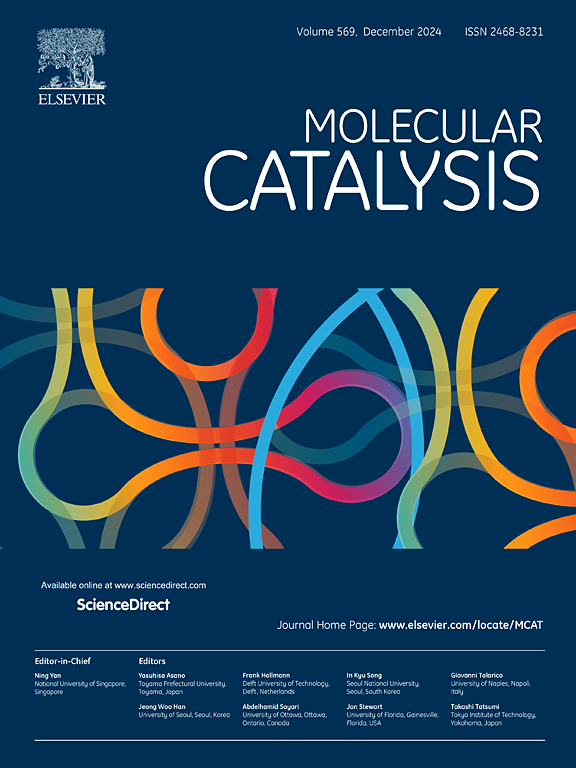Distinctive pathways of single-atom and nanoparticle sites over Co-based catalysts for furfuryl alcohol hydrogenation
IF 3.9
2区 化学
Q2 CHEMISTRY, PHYSICAL
引用次数: 0
Abstract
The targeted transformation of biomass resources into premium chemicals and biofuels stands out as a highly promising approach to mitigate greenhouse gas emissions and curb environmental pollution caused by excessive use of fossil fuels. The catalysts with diverse active sites are crucial to determine the products distribution of furan-containing bio-based feedstocks hydrogenation. Herein, Co1/NC and CoNPs/NC catalysts have been successfully prepared and demonstrated distinct reaction pathways in the selective hydrogenation of furfuryl alcohol (FOL). Notably, the Co1/NC catalyst showed 11.8 % FOL conversion within 1 h and both furan ring (C = C) and the C–OH could be hydrogenated over CoN4 sites. In contrast, the Co nanoparticles were more inclined to facilitate the activation and cleavage of C–OH bond in FOL with 92.2 % selectivity of 2-methylfuran and its derivatives over CoNPs/NC catalyst. Although the temperature, H2 pressure and solvents can affect products distribution, their impact differences also depended on the nature of the active sites. This work underscores the importance of a thorough understanding about the structure–activity relationship, which is crucial to systematic design suitable catalysts with tailored active sites for specific catalytic reactions.

呋喃醇加氢的单原子和纳米粒子位点的独特途径
有针对性地将生物质资源转化为优质化学品和生物燃料,是减少温室气体排放和遏制过度使用化石燃料造成的环境污染的一种非常有前途的方法。具有不同活性位点的催化剂是决定含呋喃生物基原料加氢产物分布的关键。本文成功制备了Co1/NC和CoNPs/NC催化剂,并在糠醇(FOL)选择性加氢反应中表现出不同的反应途径。值得注意的是,Co1/NC催化剂在1 h内的FOL转化率为11.8%,呋喃环(C = C)和C - oh都可以在CoN4位点上加氢。相比之下,Co纳米颗粒更倾向于促进FOL中C-OH键的活化和裂解,2-甲基呋喃及其衍生物在CoNPs/NC催化剂上的选择性为92.2%。虽然温度、H2压力和溶剂都会影响产物的分布,但它们的影响差异也取决于活性位点的性质。这项工作强调了彻底了解结构-活性关系的重要性,这对于系统地设计适合特定催化反应的具有定制活性位点的催化剂至关重要。
本文章由计算机程序翻译,如有差异,请以英文原文为准。
求助全文
约1分钟内获得全文
求助全文
来源期刊

Molecular Catalysis
Chemical Engineering-Process Chemistry and Technology
CiteScore
6.90
自引率
10.90%
发文量
700
审稿时长
40 days
期刊介绍:
Molecular Catalysis publishes full papers that are original, rigorous, and scholarly contributions examining the molecular and atomic aspects of catalytic activation and reaction mechanisms. The fields covered are:
Heterogeneous catalysis including immobilized molecular catalysts
Homogeneous catalysis including organocatalysis, organometallic catalysis and biocatalysis
Photo- and electrochemistry
Theoretical aspects of catalysis analyzed by computational methods
 求助内容:
求助内容: 应助结果提醒方式:
应助结果提醒方式:


